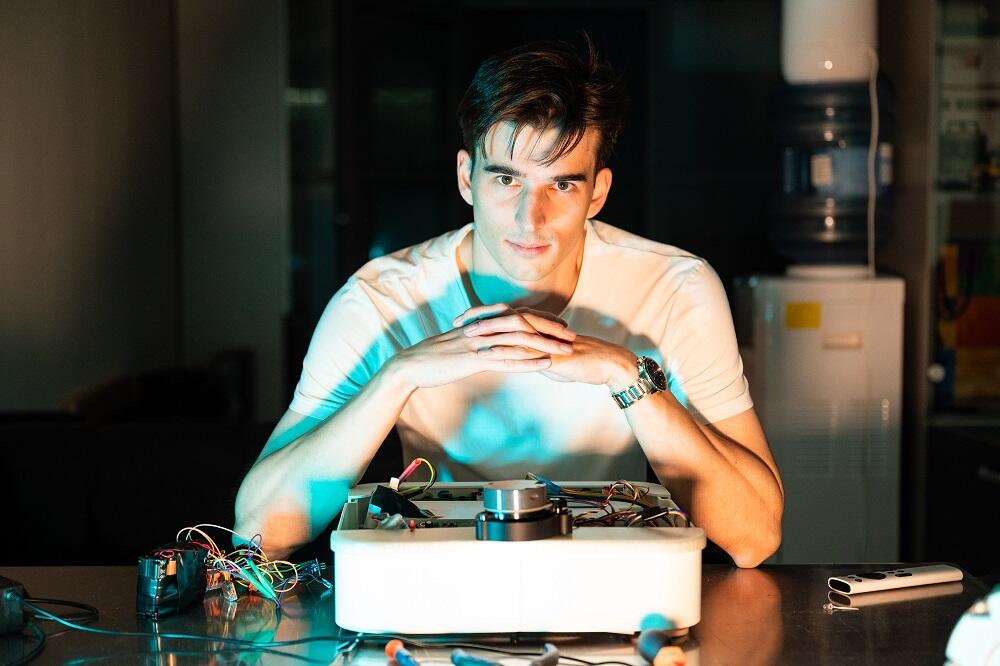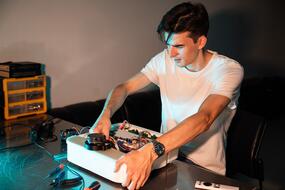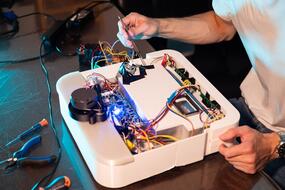Students from MISIS University have presented a prototype of an improved home robotic vacuum, which, unlike existing models, is more effective at cleaning hard-to-reach places. To achieve this, the device is equipped with a suction mechanism that spans the entire width of the body and an automatic wet cleaning cloth replacement feature.
Automated home assistants began gaining popularity in 1997 when the first prototype of a robotic vacuum was showcased. Today, there are numerous devices on the market that perform dry, wet, and combined cleaning.
“According to data from 2023, around 1.6 million imported cleaning robots enter the Russian market annually. Therefore, creating Russian technology is especially relevant. Additionally, we solved the main problem of existing vacuums by integrating a suction mechanism across the entire width of the body, rather than just in the center, to ensure better cleaning in hard-to-reach areas,” said Sergey Trushin, the lead developer of the vacuum robot and a graduate of MISIS University.
The cleaning quality of the robot, created in the Student Design Bureau at NUST MISIS, is comparable to manual cleaning, especially in room corners and along walls, where ordinary robots leave dust
Another feature implemented by the students is the ability to replace wet cleaning cloths without human intervention. For this, a screw mechanism and mounting plates were 3D printed.
“The main task of an engineer is to create products that are not only effective but also accessible to a wide range of users. NUST MISIS students were able to apply their knowledge in practice by solving problems faced by consumers. Our graduates are innovators, and we will continue to support them on this path by providing opportunities for development and self-realization. In the future, we plan to improve mechanisms for long-term stable operation,” noted Alexey Karpidov, head of the Department of Engineering of Technological Equipment.
Future plans include developing digital control systems for the components of the cleaning robot.






